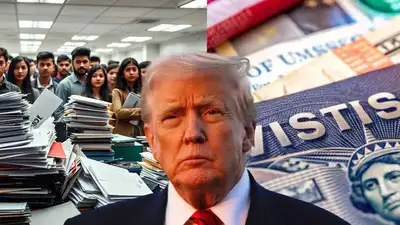ARTICLE AD BOX

The United States has long sold itself as the world’s premier destination for higher education, a place where students from every corner of the globe could bring their dreams, talent, and ambition.
But that promise is fading. A mix of visa delays, travel bans, and political hostility under President Donald Trump has reshaped the international student experience, and pushed thousands of aspiring scholars to look elsewhere.
From dream to dead end
For decades, international students formed a cornerstone of American higher education. According to The New York Times, nearly one million were studying in the US just a year ago, and universities — from Columbia to Purdue to Arizona State, relied on them not just for their talent but also for the financial stability they brought.
Many paid full tuition, subsidizing aid for domestic students and funding crucial research.But Trump’s policies flipped the script. Students from Iran, Afghanistan, and other countries directly impacted by the administration’s travel bans found themselves locked out. Even those from top-sending nations like India and China, who make up the bulk of America’s international student body, were slowed down by bottlenecked visa appointments and heightened scrutiny.
In some months, there were no student visa slots available at all.The Institute of International Education, in a survey of more than 500 US universities, found that over a third reported a dip in international applications last year, the steepest drop since the pandemic. NAFSA, a leading association for international educators, projected that if these problems persisted, new enrollment could fall by as much as 40% this fall, a staggering 150,000 students lost.
‘They’re literally some of the best in the world’
The biggest loss, educators warn, is not financial, it’s intellectual. Wendy Wolford, vice provost for international affairs at Cornell University, told The New York Times that “they’re literally some of the best in the world.” Students arriving from abroad enrich classrooms, contribute to groundbreaking research, and expose peers to new perspectives. Their absence, Wolford said, diminishes US campuses and curtails the country’s soft power, as fewer students return home carrying goodwill for America.But many students now feel unwelcome. The Trump administration’s rhetoric often painted them as security risks or competitors taking slots from US citizens. “We have people who want to go to Harvard and other schools, they can’t get in because we have foreign students there,” Trump argued at one point.Policies followed words. Visas were revoked by the thousands, more than 6,000 in a single year. Students caught up in deportation threats described the process as opaque, while immigration lawyers said many cases seemed ideological. According to The New York Times, one Iranian student, Noushin, who secured admission to the University of South Carolina, has been waiting months in “administrative processing.”
On Telegram, she discovered hundreds of others in similar limbo.
A chilling effect
The fear is not only about entry but also about what comes after. Some students who managed to secure visas worried about being “trapped”, unable to travel home for holidays or apply for internships without risking their status. Others abandoned US universities altogether, choosing institutions in Europe or Asia instead. “The rules of the game changed dramatically,” Wolford told The New York Times.Trump’s travel bans made matters worse. Afghan women awarded full scholarships in the US found themselves unable to attend because visas were simply impossible to obtain. Iranian students, despite winning admission and funding, were stuck abroad while their American peers moved ahead in research labs.Even universities scrambled for solutions. Cornell, for instance, offered affected students the chance to begin the semester at partner campuses in Scotland, Hong Kong, or South Korea.
Few took up the offer. Most either held out hope for US visas, or simply gave up.
What’s at stake
The ripple effects stretch far beyond enrollment charts. Losing international students means losing top-tier researchers, engineers, and innovators, many of whom might otherwise stay in the US to fuel its workforce and economy. “Students like me are not a threat to U.S. society,” Pouria, an Iranian doctoral admit stuck in visa delays, told The New York Times. His research, backed by the Texas Department of Transportation, now risks stalling.For decades, the US higher education system has thrived precisely because it attracted global talent. Now, as students turn away in response to Trump-era policies, other countries are seizing the opportunity. European and Asian universities are seeing the benefits of American hesitation.The question lingers: Will the US regain its role as the beacon for global talent, or will the vanishing promise of its universities become permanent?TOI Education is on WhatsApp now. Follow us here.



.png)
.png)
.png)
















 1 day ago
6
1 day ago
6









 English (US) ·
English (US) ·